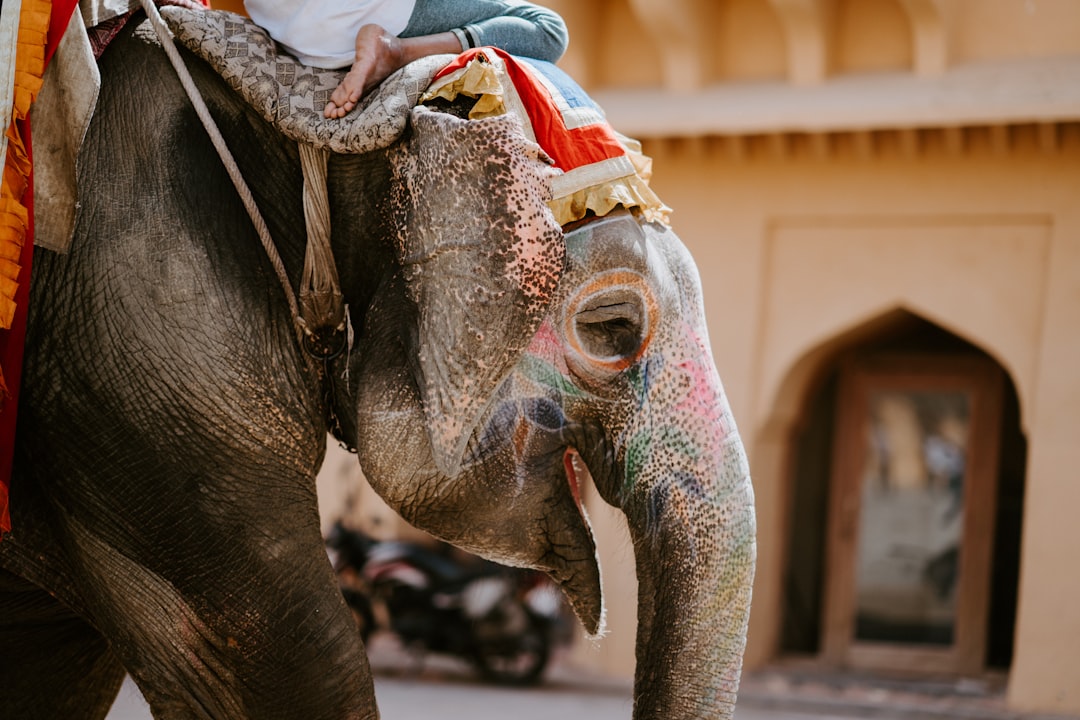# Discover the Magnificence of Amritsar Golden Temple: A Sacred Experience.
Introduction
Have you ever dreamt of immersing yourself in a place where tranquility meets grandeur? The Amritsar Golden Temple, also known as Sri Harmandir Sahib, stands as a beacon of spiritual solace and architectural brilliance in the heart of Punjab, India. This sacred shrine, visited by millions of devotees and tourists each year, holds within its walls a profound history and deep-rooted cultural significance. In this blog post, we delve into the mesmerizing world of Amritsar Golden Temple, exploring its spiritual allure, architectural marvels, cultural heritage, and practical insights for visitors.
Main Content
1. History and Significance of Amritsar Golden Temple
#### Introduction
The Amritsar Golden Temple holds a rich tapestry of historical narratives dating back to its inception in the 16th century by Guru Arjan Dev, the fifth Sikh Guru, symbolizing the essence of Sikhism and humanity’s spiritual quest.
#### Key Points:
- The significance of the name “Amritsar” and its connection to the sacred pool surrounding the temple.
- Historical milestones and key events that shaped the temple’s identity.
- The inclusive ethos of the Golden Temple and its role as a symbol of communal harmony.
2. Architectural Wonder of the Golden Temple
#### Introduction
The architectural brilliance of the Amritsar Golden Temple transcends mere aesthetics, blending intricate design elements with spiritual symbolism to create a harmonious sanctuary.
#### Key Points:
- The unique blend of Mughal and Sikh architectural styles in the temple’s construction.
- The symbolic significance of the four entrances, reflecting the principle of equality and openness.
- The stunning golden facade and the mesmerizing reflection in the surrounding waters of the Sarovar.
3. Spiritual Experience at Amritsar Golden Temple
#### Introduction
Visiting the Golden Temple is not just a physical journey; it is a spiritual pilgrimage that touches the soul and fosters inner reflection and peace.
#### Key Points:
- The concept of seva (selfless service) and langar (community kitchen) at the Golden Temple.
- The magnetic pull of the Akal Takht and the spiritual resonance of the Guru Granth Sahib.
- Practices and rituals that enhance the spiritual experience for visitors.
4. Cultural Heritage and Festivals
#### Introduction
The Amritsar Golden Temple is not only a religious site but also a cultural hub where tradition and festivity converge in vibrant celebrations throughout the year.
#### Key Points:
- The cultural significance of Baisakhi and other festivals celebrated with fervor at the Golden Temple.
- Traditional music and Gurbani recitals that create a serene ambiance within the temple complex.
- The role of the Sikh community in preserving and sharing their heritage through storytelling and art.
5. Visitor’s Guide to Amritsar Golden Temple
#### Introduction
Planning a trip to the Amritsar Golden Temple requires logistical preparedness and cultural sensitivity to fully appreciate the experience.
#### Key Points:
- Practical tips for navigating the crowds and queues at the temple entrance.
- Etiquette and dress code guidelines for visitors, emphasizing respect and modesty.
- Recommended timings for different activities within the temple complex.
Conclusion
In conclusion, the Amritsar Golden Temple transcends its physical presence to embody the spiritual essence of Sikhism and universal humanity. Visiting this sacred shrine offers not just a glimpse into history and architecture but a transformative journey of inner peace and cultural immersion. As you embark on your exploration of the Amritsar Golden Temple, remember that its golden domes echo timeless wisdom and boundless grace, inviting all souls seeking solace and spiritual nourishment.
Experience the magic of Amritsar Golden Temple – where devotion meets architectural splendor and history intertwines with spirituality. Plan your visit, soak in the divine ambiance, and carry with you the blessings of this sacred sanctuary.
Call to Action: Share your thoughts on the Amritsar Golden Temple experience in the comments below and spread the word about this spiritual marvel to inspire others!
Frequently Asked Questions
1. When was the Amritsar Golden Temple built?
The construction of the Amritsar Golden Temple began in the 16th century, under the guidance of Guru Arjan Dev, the fifth Sikh Guru.
2. How did the Golden Temple get its name?
The name “Amritsar,” meaning the “pool of nectar,” is derived from the sacred Sarovar (pool) surrounding the Golden Temple.
3. Is the Golden Temple open to people of all faiths?
Yes, the Golden Temple welcomes visitors of all faiths, embodying the spirit of inclusivity and communal harmony.
4. What is the significance of the langar at the Golden Temple?
The langar, or community kitchen, serves free meals to anyone, irrespective of their background, emphasizing the principles of equality and selfless service.
5. How can visitors contribute to the upkeep of the Golden Temple?
Visitors can volunteer for seva (selfless service), donate to the temple funds, or participate in community initiatives to support the maintenance and development of the Golden Temple.
Tags
Amritsar Golden Temple, Sri Harmandir Sahib, Sikhism, Punjab, India, architecture, spirituality, cultural heritage, festivals, visitor’s guide

What a captivating exploration of the Amritsar Golden Temple! The blend of spirituality, history, and cultural richness truly makes it a must-visit destination.
Rating: ⭐⭐⭐⭐
What a captivating exploration of the Amritsar Golden Temple! Your post beautifully captures the spiritual allure and architectural magnificence of this sacred place. Thank you for sharing this enriching experience!
Rating: ⭐⭐⭐⭐⭐
The Amritsar Golden Temple is truly a sacred marvel that encapsulates rich history, architectural beauty, and spiritual solace. Your blog post beautifully captures the essence of this divine sanctuary.
Rating: ⭐⭐⭐⭐⭐